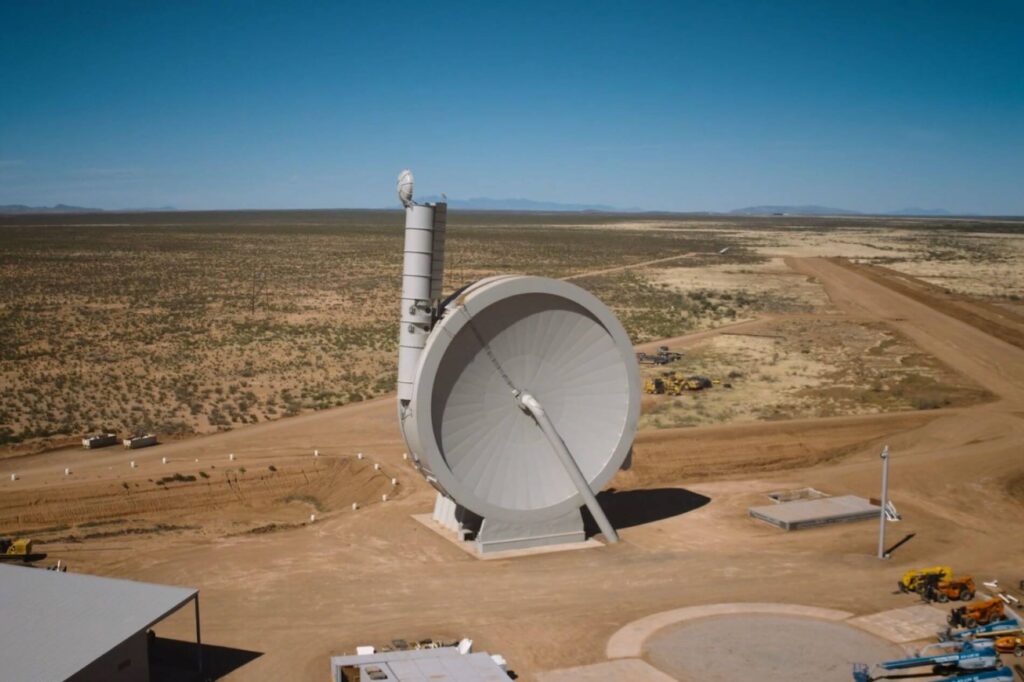SpinLaunch, an American startup that aims to provide an alternative to space rockets, announced its first successful test. The company used a giant centrifuge to spin a payload and fling it to a high altitude.
The test was conducted on October 22, 2021. According to SpinLaunch, the projectile was accelerated to “many thousands of miles an hour,” and reached an altitude of “tens of thousands of feet” before falling down and being recovered, CNBC reports.
The internationally recognized boundary of space, the Kármán line, is 100 kilometers, or 330,000 feet above sea level. While the projectile did not reach space, the company says the launcher utilized only 20% of its full capacity for the test.
The launcher, which the company refers to as the Suborbital Accelerator, has a height of 50 meters (over 160 feet), and contains a circular vacuum chamber where a projectile is spun on a carbon fiber tether. After being accelerated, the projectile is detached and flies upwards through an opening.
SpinLaunch was established in 2014. At first, it built a 12-meter (39 feet) prototype centrifuge, which could test the ability of various payloads to endure the high-G environment they would experience while being accelerated. In 2019, the company began building the Suborbital Accelerator on the premises of Spaceport America, in New Mexico, United States.
Being a technology demonstrator, the Suborbital Accelerator is intended to pave the way for the Orbital Accelerator, a three-times-larger structure able to fling satellites weighing up to 200 kilograms (440 pounds) at speeds exceeding 8000 kilometers per hour (5000 miles per hour).
For additional flexibility, the projectile can be equipped with a rocket engine, as suggested by the company’s promotional material.
Nevertheless, the SpinLaunch claims the addition of rocket power is unnecessary, as the Orbital Accelerator alone could provide enough velocity for the projectile to escape the atmosphere.
Thus, according to a breakdown on the SpinLaunch website, by using an electric drive in its launchers the company will be able to deploy satellites 10 times cheaper and with a four times reduction in fuel usage than with conventional rockets.
“SpinLaunch enables a future in which constellations of satellites and space payloads can be launched with zero emissions in the most critical layers of the atmosphere,” the company says.
SpinLaunch has yet to announce where it intends to build the Orbital Accelerator, although it referred to the location as a “coastal launch site” in a promotional video.
According to the company, the first commercial launch is planned for 2024.


